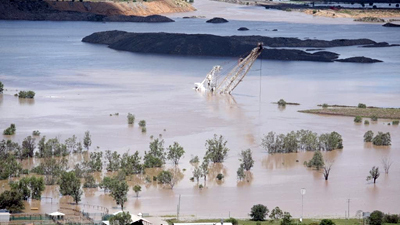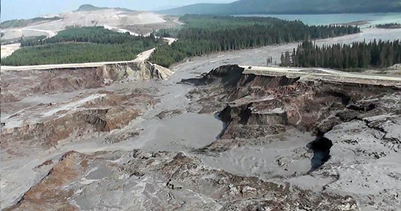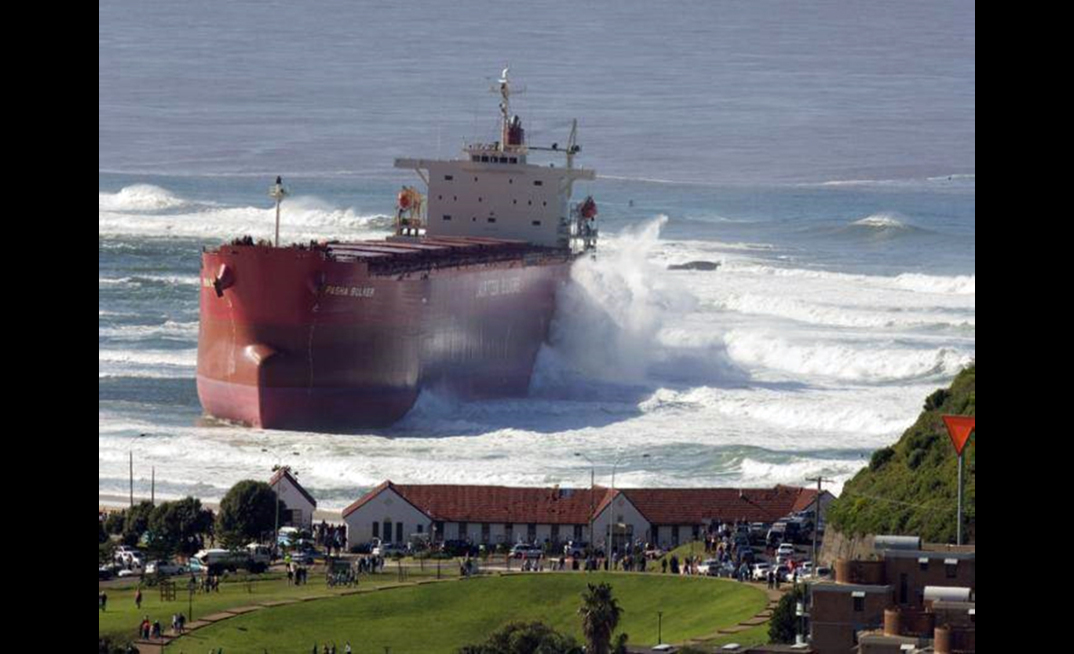When forecasting long term risk for mining operations, it seems reasonable to expect climate change to feature high on the hit list.
According to Dr Barton Loechel from the CSIRO, "Climate change in Australia is projected to lead to more frequent and severe droughts, floods and heat waves; increased cyclone intensity; sea-level rise and ocean acidification, albeit with significant regional variations over different time frames."
Many of us can relate with our own recollections of extreme events like when a bushfire burned at a coal mine in Victoria and disrupted Victoria's power supply. We also remember Cyclone Debbie disrupting coal exports out of Queensland ports in 2017.
This event consisted of multiple fronts impacting the supply chain including storm surges at ports and train lines washed away and of course wide spread flooding of the mine sites and mine infrastructure.
Even as I am writing this I stumble across a news story about workers at Alcoa's bauxite mine and alumina refinery near Pinjarra in Western Australia, who are on alert for a nearby bushfire in a state forest.
The impacts of these events are not only felt by mining operations but they also affect remote communities who are engaged with mining and mining services.
When looking at the image below it is difficult to imagine the current impact the drought has on mining and minerals processing. Water used for washing and upgrading of minerals is critical to Australia's competitiveness in the global market.

North Queensland mines affected by cyclone Debbie.
The question for the mining community in Australia is do we just lurch from one extreme weather event to another? Mopping up the mess, getting back into production, trying to claw back losses? As an industry are we prepared or capable of becoming prepared, and what is the consequence of no action? What is the role of mining supply companies and OEM's to assist our customers with disaster mitigation and recovery planning?
I should again refer to research mentioned by Dr Loechel in his article "Mining companies are underprepared for climate change".
This article has some rather alarming observations about the industry's capacity to adapt or prepare for climate change. In fact it suggests that only 13% of respondents have undertaken climate based risk studies. It would appear that mining organisations sight uncertainty around climate based regulation and uncertainty of climate change impacts as a reason for sluggish policy development and risk assessment in this area. It seems to me that by developing plans for disaster mitigation and recovery, we immediately reduce the level of uncertainty. Being seen to take steps in this direction is as important as the action itself.
Uncertainty is a word no one likes to hear in the mining and minerals processing industry. We can however, point to some stakeholders in the mining industry, such as insurers and investor groups who are paving a road forward in assessment and management of climate based risk for miners.
An excellent example is the report "Assessing climate change risks and opportunities mining and minerals processing sector", delivered on research completed by Dr Michael H Smith of ANU and commissioned by Investor Group.
This report provides an excellent resource for Investors but, offers a template for mining companies, their suppliers and partners to develop climate based management strategies. The report focuses on climate induced risk events as well as energy and carbon based risks. It identifies direct impacts for each event category and potential mitigation strategies.
Interestingly, increased rainfall in the form of mine site flooding tops the list in terms of its direct effects on production, delivery and therefore income as well as cost impacts for repairs. However the cost of tailings dam failures after prolonged extreme rainfall events introduces compensation costs to the mix and this could be a game changer for investors.

Tailings dam content released into a river watershed.
The report also considers the combination of diminishing ore grades against the increasing cost of energy. It singles out the cost of comminution increasing considerably as ore quality declines.
This is where we see technology suppliers and mine owners working together. From an investor point of view and a socio/ environmental position, tailings ponds must be replaced by technologies to eliminate risk. The business case must be written based on the 30 year risk horizon which includes socio/environmental losses.
Similarly, it makes perfect sense to pursue technologies that reduce the long term energy input costs for mining operators. The mining industry must assume existing artificial benefits such as, diesel subsidies, will cease to exist and that the future introduction of a carbon price is a certainty for our industry.
Connect with Chris
References
- https://theconversation.com/mining-companies-are-underprepared-for-climate-change-13091
- https://www.researchgate.net/publication/304783841_Assessing_Climate_Change_Risks_and_Opportunities_Mining_and_Minerals_Processing_sector
Images
ABOUT THIS COMPANY
McLanahan Corporation
Feeding, Crushing, Sampling, Dewatering and Scrubbing equipment.
HEAD OFFICE:
- 27 Kalinya Close, Cameron Park, NSW 2285, Australia
- Phone: +61 2 4924 8248
- Website: www.mclanahan.com.au
- Email: sales@mclanahan.com.au

























